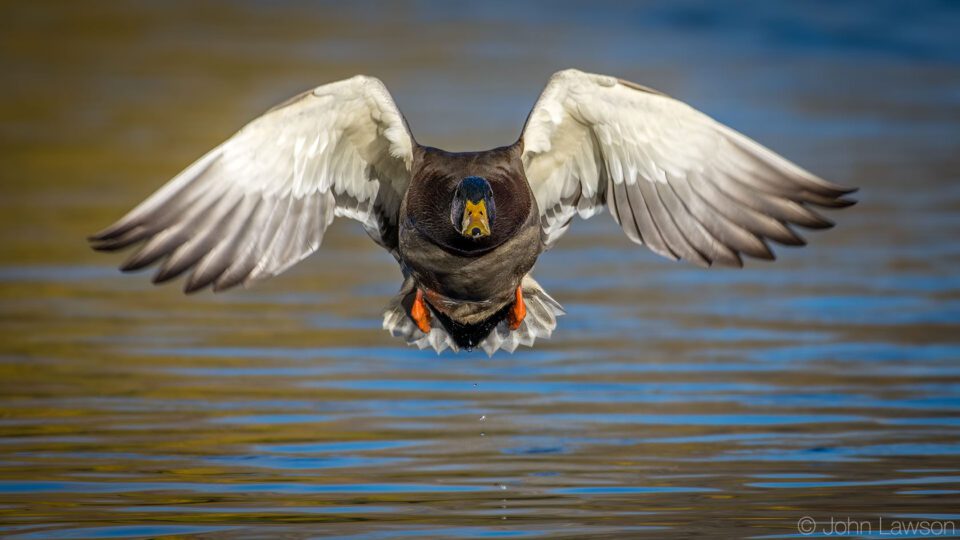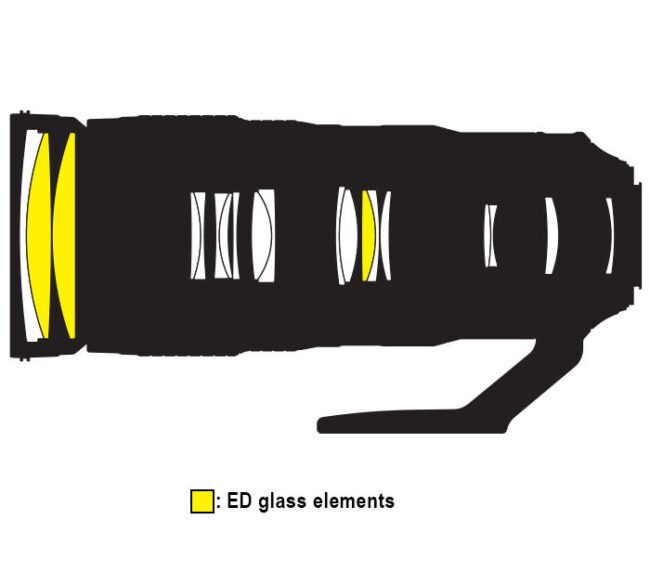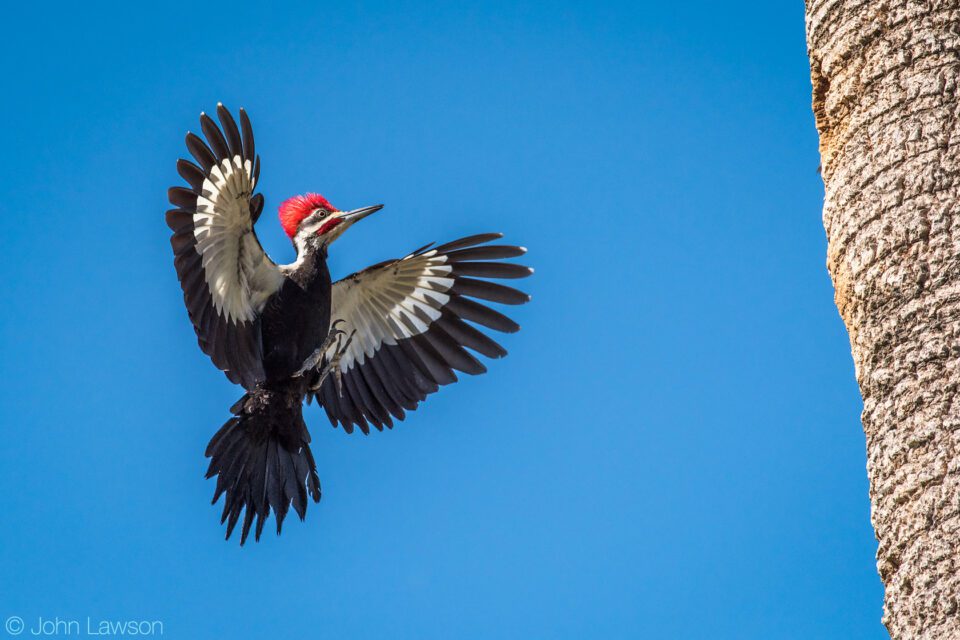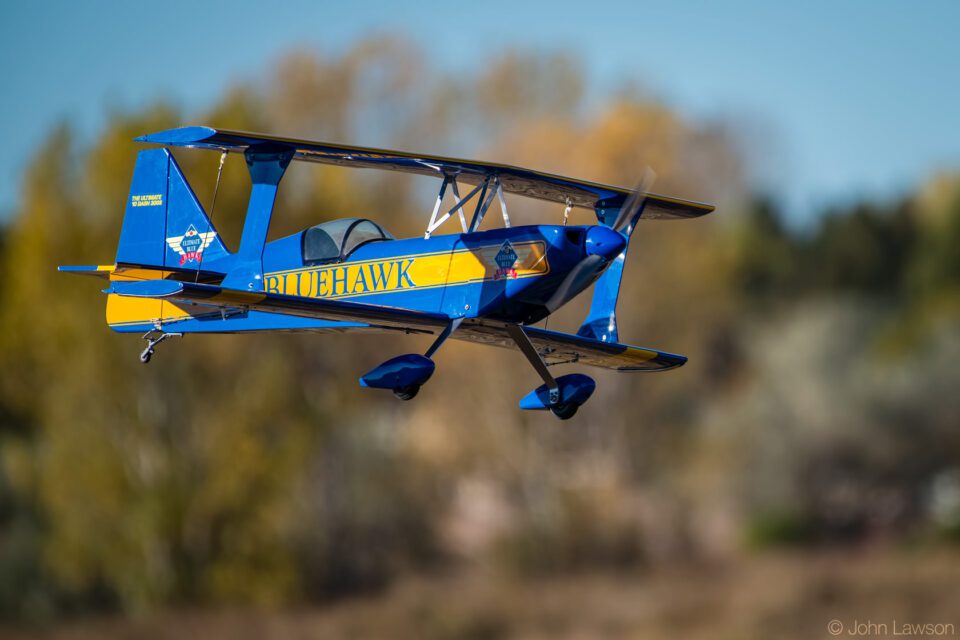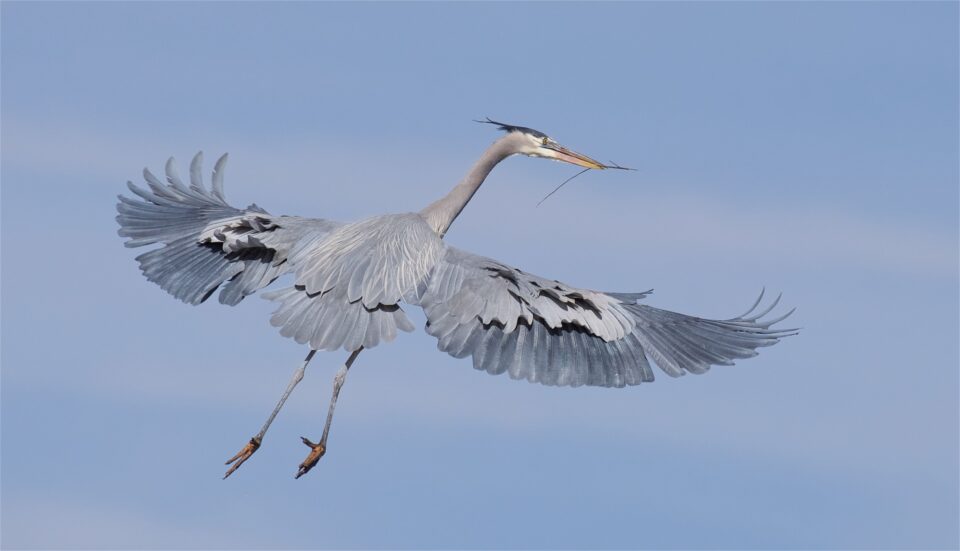For many years, Nikon has been limiting affordable super telephoto zoom lenses above 300mm to the 80-400mm VR lens, while keeping its high-end super telephoto line of zoom and prime lenses available only for those with deep pockets. With Tamron and Sigma pushing great budget-friendly 150-600mm options, Nikon finally decided to release its first constant-aperture super telephoto zoom competitor in August of 2015. Specifically designed for beginner and enthusiast wildlife / sports photographers, the new Nikkor 200-500mm f/5.6E ED VR became the first hand-holdable Nikon lens to reach 500mm at a relatively low price point of $1,399. This offering, coupled with the upcoming Nikon D500 DSLR (see our D500 announcement post) makes a killer combination for action photography. With an equivalent field of view of 300-750mm and the capability to shoot fast action at up to 10 frames per second on the D500, the Nikon 200-500mm f/5.6E VR is definitely going to become one of the most popular lenses in Nikon’s lens line-up, thanks to its versatility and reach. Although our team at Photography Life has not had a chance to test this particular combination due to unavailability of the D500 in the US, we have been actively using the lens on camera bodies like the Nikon D7200, D750, D810 and D4S for this particular review. We are planning to write a follow-up article covering the use of the lens on the Nikon D500, once we get our hands on the camera. Meanwhile, please enjoy the review of the Nikon 200-500mm VR lens, along with comparisons to Tamron 150-600mm VC, Sigma 150-600mm C / Sport and Nikon 80-400mm VR lenses.
Special thanks to Tom Redd and John Lawson for sharing their beautiful images for the review.
1) Lens Overview
The Nikon 200-500mm f/5.6E ED VR is designed very differently than the 80-400mm f/4.5-5.6G VR or the 150-600mm variable aperture lenses from Tamron and Sigma. With a total weight of 2,300 grams, it is noticeably heavier than the 80-400mm at 1,570 grams, the Tamron 150-600mm f/5-6.3 VC at 1,951 grams, and the Sigma 150-600mm f/5-6.3 DG OS HSM at 1,930 grams. Weight-wise, it is probably more appropriate to compare it to Sigma’s Sport version of the 150-600mm lens, which is 560 grams heavier in comparison. Despite the fact that it is the only lens with a fixed aperture of f/5.6 in this group of super telephoto zooms, it does not have the same reach opportunities – those 100mm on the long end surely do make a difference! However, let’s not forget that the 150-600mm lenses don’t do particularly well optically at the long end and cannot be used with teleconverters, while the Nikkor 200-500mm f/5.6E VR can be. This begs the question – can the 200-500mm f/5.6E VR match the optical quality of the 150-600mm lenses with a 1.4x teleconverter? While we would be dealing with 700mm vs 600mm on the long end, this was one of my main questions when I got a hold of the 200-500mm VR. True, there would be some loss of light (f/8 vs f/6.3), but if it was as good optically at 600mm with a teleconverter, I would probably opt for the 200-500mm instead of the third party options, mainly because of autofocus reliability. Having tested a number of 150-600mm lenses, I was also a bit worried about quality assurance and reliability issues, thinking that Nikon would be better in that department overall. Sadly, as reported further down in this review, that did not turn out to be the case…
In terms of lens design, Nikon threw in quite a bit of its modern optical technologies into the lens. Although it does not come with Nano Coating, the lens does feature a Silent Wave Motor, up to 4.5 stops of Vibration Reduction / image stabilization compensation, internal focus design and 3 extra-low dispersion lens elements. One by one Nikon has been slowly replacing its old-style designed lenses featuring mechanical diaphragms with the newer, superior electromagnetic diaphragm. I wonder why some of the modern lens designs by Nikon, such as the Nikkor 24mm f/1.8G, still feature mechanical diaphragms using an aperture lever on the lens mount – those lenses were probably in the making for a long while.
It is impressive that Nikon was able to come up with a constant aperture lens design for such a long zoom lens. Lenses of similar class we have seen in the past from Tamron (SP 200-500mm f/5-5.3 Di LD) and Sigma (150-500mm f/5-6.3 DG OS HSM), as well as the newer 150-600mm variants, all have variable apertures from short to long end of the range (f/5 to f/6.3), so the Nikkor 200-500mm is the first of its kind. Although modern DSLRs do quite well with slower lenses (thanks to their superior AF systems capable of handling lenses all the way up to f/8), earlier models struggled with lenses that went past f/5.6, providing unreliable and inconsistent focusing experience, particularly in low-light situations. The Nikon 200-500mm f/5.6E VR does not have such issues, because of its brighter maximum aperture of f/5.6 at all focal lengths, which is why the lens is actually suitable to use with the 1.4x teleconverter.
Let’s take a look at the lens in more detail.
2) Lens Specifications
Main Features:
- Compact super telephoto zoom lens for birding, wildlife, motorsports, events and more
- 500mm of zoom power on FX-format DSLRs; 750mm equivalent on DX-format DSLRs
- Fast f/5.6 constant aperture for beautiful out-of-focus backgrounds and low-light performance
- ~4.5 stops of Vibration Reduction with Sports mode
- AF compatible with optional TC-14E series teleconverters and DSLRs that offer f/8 support
Here is the summary of the technical specifications of the lens:
Technical Specifications:
- Mount Type: Nikon F-Bayonet
- Focal Length Range: 200-500mm
- Maximum Aperture: f/5.6
- Minimum Aperture: f/32
- Angle of View (FX-format): 12°20′ – 5°00′
- Angle of View (DX-format): 8°00′ – 3°10′
- Lens (Elements): 19
- Lens (Groups): 12
- Compatible Format(s): FX, DX
- VR (Vibration Reduction) Image Stabilization: Yes
- Diaphragm Blades: 9
- ED Glass Elements: 3
- Super Integrated Coating: Yes
- Autofocus: Yes
- AF-S (Silent Wave Motor): Yes
- Internal Focusing: Yes
- Minimum Focus Distance: 7.2 ft (2.2 m)
- Focus Mode: Manual, Manual / Auto
- Filter Size: 95mm
- Accepts Filter Type: Screw-on
- Compatible with Nikon AF-S Teleconverters: Yes
- Dimensions: 4.2 in. (108 mm) x 10.5 in. (267.5 mm)
- Weight (Approx.): 81.2 oz. (2300 g)
Detailed specifications for the lens, along with MTF charts and other useful data can be found in our lens database.
3) Lens Handling and Build Quality
The Nikon 200-500mm f/5.6E VR is built quite well and should last many years without service if it is properly handled. Despite its mostly plastic barrel construction (the tip of the zoom ring where the focal lengths are engraved, along with the tripod foot and the mount are made out of metal), one could tell that there are plenty of metal components inside the lens, since it is a pretty hefty lens. With a total of 19 elements in 12 groups, the lens obviously has quite a bit of glass inside as well, with three fairly large elements stacked up in the front part of the lens:
While these are not the super lightweight fluorite elements we see on the latest high-end super telephotos, two out of the three elements on that front are extra-low dispersion lens elements, which help improve the overall sharpness and contrast of the lens by significantly reducing spherical aberration. Another ED element is placed in the middle part of the lens, which belongs to the group of elements that does not extend when the lens is zoomed in.
Speaking of zooming in, the 200-500mm VR has a very large and thick zoom ring, similar to the one on the 80-400mm VR. All three copies of the 200-500mm VR I have handled so far had very nice and smooth zoom rings, coming to abrupt stops at both 200mm and 500mm marks.
Additional handling notes from John Lawson: Full zoom from one end to the other requires almost 180 degrees of rotation on the zoom ring. That is too far to go without stopping and resetting your grip. And that is not what you want to be doing when trying to maintain correct framing on a fast approaching subject such as a bird in flight. The best technique then is to grip the front of the lens barrel and use it as a push-pull zoom. That works for the most part but it can sometimes be difficult to keep a good grip on the barrel, especially with gloves on. Points off for that oversight.
When traveling, one can lock the lens at its shortest length of 200mm using a switch on the side of the lens barrel, as pictured below. Similar to the zoom ring, the focus ring is also nice and thick, which can be particularly useful when manually overriding focus. What I like about the placement of the focus ring, is that it is located at the back of the lens, which is an advantage when hand-holding the lens, since you never actually touch the focus ring in the process. When compared to the flimsy focus ring on the Sigma 150-600mm, the focus ring on the Nikkor 200-500mm VR is actually very smooth, allowing for more precise focus acquisition. Just like all other modern AF-S lenses, the lens will go beyond infinity and continue to rotate once the minimum and maximum limits are reached.
As seen above, the lens features a total of four switches on the side of the lens. From top to bottom, there is a focus mode switch that allows switching from autofocus with manual focus override to manual focus, focus limiter switch that goes from close focus to infinity (full range) and 6 meters to infinity, vibration reduction (VR) switch and lastly, vibration reduction mode switch that allows switching between Normal and Sport mode.
When it comes to hand-holding, although as I have already said above, the three largest glass elements are located on the front of the lens, it still does not make the lens front-heavy. Whether shooting at 200mm or fully extended to 500mm, the lens feels nicely balanced on hand.
The same cannot be said about the use of the lens on a tripod. Unfortunately, Nikon continues screwing up the tripod collar on such lenses. First, we are still dealing with the same single threaded tripod foot that requires attaching a tripod plate. Why can’t Nikon make its tripod feet compatible with Arca-Swiss? With so many Arca-Swiss compatible tripod clamps and accessories out there, it is pretty much a standard now, especially among sports and wildlife photographers. I can’t blame only Nikon for this, since all other lens manufacturers follow a similar practice of providing useless tripod collars and feet, but perhaps if one moves towards that direction, others would follow. Second, there is only one point of connection to the lens collar, located far on the back of the lens barrel, which means that most of that 2.3 kg of weight basically pushes into a single area. A better way to design a tripod collar in my opinion, would be to stabilize the lens at two points, similar to what a number of Kirk and RRS replacement lens collars do. I would personally replace the stock lens collar with this one from Kirk and if I used a standard ballhead or a gimbal head that mounts the lens in a landscape orientation, I would also get this extra accessory to support the weight of the lens in two areas. As a word of caution, never let lenses this heavy just dangle off the camera mount, as applying too much pressure might tilt or damage the camera mount and potentially even break it. There is a reason why such lenses are shipped with a tripod collar!
The Nikon 200-500mm f/5.6E VR is not weather sealed like some of the high-end super telephoto lenses are, but it does a pretty decent job at withstanding extreme cold, dust and moisture. I used the lens at Bosque del Apache when the outside temperature was below freezing and I did not experience and lock-ups or other related issues. I carried the lens with me in the car while driving through pretty dusty roads of Joshua Tree NP and Death Valley NP and it did not seem to attract too much dust. Still, I would certainly refrain from abusing it like a pro-level lens – the lens will suck quite a bit of air in when zooming in and out, so if you expose it to too much fine dust, you might eventually need to deal with a Nikon service center for some deep cleaning. Although dust does not normally impact image quality, it will eventually reduce lens contrast. The good news is, the rear of the lens is somewhat protected with a non-moving optical element, so you should not need to worry about too much dust making its way into the lens from the mount / camera side. In addition, the mount itself is protected with a rubber gasket. However, there is a small gap between the rear element and the lens, so if you do decide to change lenses in a dusty environment, make sure that you lock the zoom ring at 200mm before you do it. Otherwise, you risk sucking more dust into the lens through that opening.
Overall, the build quality of the Nikon 200-500mm f/5.6E VR is very good for its price and in my opinion slightly exceeds the quality of the Tamron and Sigma counterparts.
4) Quality Assurance / Sample Variation
When a lens with such a huge zoom range and low price point is made, it is safe to assume that there are always going to be compromises. Lenses can suffer from all kinds of problems – from de-centering of lens elements and focus accuracy issues, all the way to poor construction practices, which can go undetected during the quality assurance process. We have seen this with the Tamron and Sigma 150-600mm lenses, which can be a bit of a gamble in terms of sample variation. Good samples can produce excellent results, while bad ones will make the experience of owning a lens pretty frustrating. Since sample variation is a big problem for properly evaluating and testing lenses, our team at PL always strives to test at least several copies of the same lens. In the case of the Nikon 200-500mm f/5.6E VR, we used two brand new samples of the lens to measure its optical performance in a lab environment, while using a total of 5 lens samples to test them in the field. My personal goal was to see how much variation there is on the 200-500mm VR and how it compares to the experience our team had with the Tamrono and Sigma counterparts.
Unfortunately, the 200-500mm VR did not turn out to be any better than the 150-600mm competitors in terms of consistency. The lens sample that John Sherman used for his testing turned out to be quite poor when shooting at infinity (as reported in his detailed super telephoto zoom lens comparison), which I did not experience with mine. Tom Redd’s first sample of the 200-500mm was “horrible” in terms of sharpness, so he had to swap his out for another sample, which turned out to be quite a bit better. My sample, along with John Lawson’s sample were quite decent from the get-go. So out of the 5 total samples, two turned out to be duds from the start, which is not a particularly encouraging statistic. Perhaps we have had bad luck, but like I have said earlier, at this zoom and price ranges, there will always be compromises. Hence, you should not pick one brand over another based on build quality – looks like they are all built in a similar fashion, with potential variance issues from sample to sample. As I always recommend, make sure to test each lens you purchase before fully committing to it – a simple focus test or a de-centering test can quickly reveal serious optical issues…
5) Autofocus Performance and Accuracy
Similar to other modern Nikon lenses, the 200-500mm f/5.6E VR comes with a fast and quiet silent wave motor (SWM). While the lens might not be as quick as some of the high-end pro-level lenses, it is still pretty fast for photographing action, especially when used on the latest generation Nikon DSLRs. I have used the lens at all focal lengths and I did not notice any performance degradation at any particular focal length in terms of autofocus speed, which is great. Unlike the 150-600mm lenses, the aperture of the 200-500mm VR does not get any smaller than f/5.6, which means that the lens should work great on older camera bodies limited to f/5.6 maximum aperture as well.
Autofocus accuracy and reliability are also quite good. I did not see any serious issues with AF accuracy and the lens seemed to lock on to subjects very well at all focal lengths, something you don’t always see on similar-class lenses. The same cannot be said about the Tamron 150-600mm, which is known to occasionally lock-up and freeze, requiring a disconnect and reconnect to the camera body. And the Sigma 150-600mm C also demonstrated focus inconsistency issues, particularly at closer distances, as noted in my Sigma 150-600mm C Review. When testing the Nikon 200-500mm VR in my lab, I tested focus acquisition speed and reliability at different focal lengths and distances to the target. I did not notice similar problems, which shows that the Nikon 200-500mm VR certainly does outperform the 150-600mm counterparts in both AF accuracy and reliability. Another good news is that I also did not experience any “AF chatter” issues I previously encountered with the Nikon 80-400mm VR – the lens did not seem to make continuous and annoying AF adjustments when the subject was still.
Additional notes on AF from John Lawson: What about tracking fast moving subjects? I would say most of the time, autofocus is fairly good for tracking birds in flight. However, it is still not as good as the super telephoto primes, which snap into focus instantly. Photographing small, fast subjects with erratic movements is quite frustrating and challenging. The lens simply does not acquire focus quickly enough. However, focus tracking for larger and more predictable subjects is much less of a problem. In fact it does quite well. As soon as I got my copy of the lens, I went to a model airplane field to test autofocus tracking. The planes move quite quickly but are fairly predictable. And there was lots of light and high contrast edges to lock onto, so focus acquisition and tracking worked well in those conditions.
Overall, the AF speed and accuracy on the 200-500mm VR are both very good. You can find additional commentary in regards to AF performance when using a teleconverter in the “Teleconverter Use” section of this review. Our team is looking forward to re-testing autofocus performance when coupled with the D5 or the D500.
6) Low-light Performance
It was interesting to compare the autofocus performance of the Nikon 200-500mm VR to that of both Sigma and Tamron 150-600mm lenses in low-light situations – at its longest focal length of 500mm, the Nikon 200-500mm VR focused with a bit more precision compared to the 150-600mm lenses at 600mm. This makes sense, since the lens receives more light (yes, f/5.6 vs f/6.3 does make a difference) and hence suffers a bit less in very dim environments. However, the real differences are pretty minor, especially when shooting with the latest Nikon DSLRs that have a -3 EV detection range and can maintain focus all the way to f/8. Still, even f/5.6 can be rather limiting in extremely low-light conditions, causing the lens to “hunt” for focus, back and forth. And that’s expected. If you constantly shoot in dim conditions, you would have to move up to exotic telephotos – in comparison, those can let a lot more light through for the camera’s autofocus system to acquire focus better.
from WordPress https://www.aioshop24.com/nikon-200-500mm-f5-6e-vr-review/
via AioShop24





